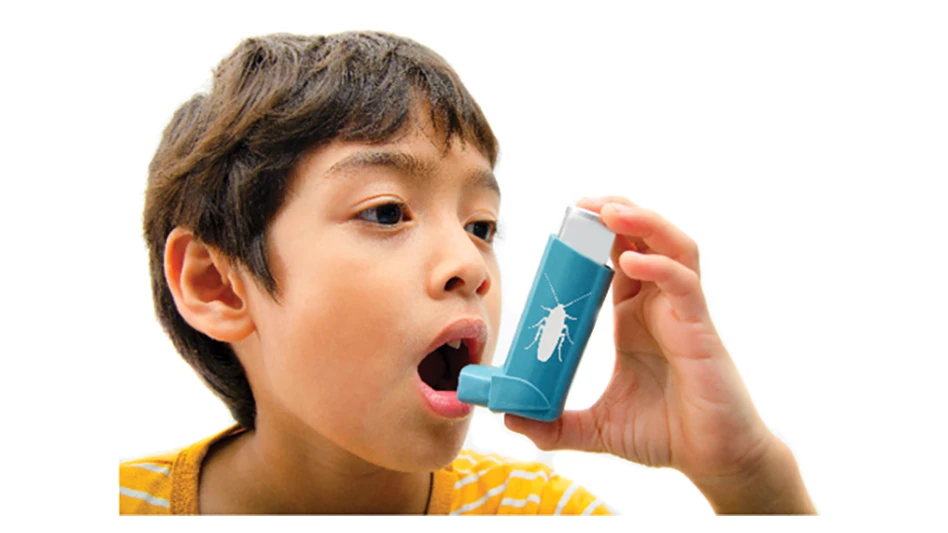 Diatomaceous earth and other abrasive dusts have been used as insecticides for millennia. Our ancestors coated themselves with earthen dusts to rid themselves of external parasites. Early civilizations also used them to protect grain from pests during storage. Of all insecticide powders, diatomaceous earth (DE) has probably received the most public attention. Do-it-yourself pest control outlets have been marketing diatomaceous earth as a non-toxic, “eco-friendly” alternative for years. The material’s purported effectiveness against bed bugs, however, is what really put it in the spotlight. Frequently cited as an effective, reduced-risk tool for managing bed bugs, the compound has become a favorite of bed bug blogs and advocacy groups.
Diatomaceous earth and other abrasive dusts have been used as insecticides for millennia. Our ancestors coated themselves with earthen dusts to rid themselves of external parasites. Early civilizations also used them to protect grain from pests during storage. Of all insecticide powders, diatomaceous earth (DE) has probably received the most public attention. Do-it-yourself pest control outlets have been marketing diatomaceous earth as a non-toxic, “eco-friendly” alternative for years. The material’s purported effectiveness against bed bugs, however, is what really put it in the spotlight. Frequently cited as an effective, reduced-risk tool for managing bed bugs, the compound has become a favorite of bed bug blogs and advocacy groups.
Understanding DE.
Diatomaceous earth is an off-white, powdery mineral mined from beneath long extinct bodies of water. The deposits consist of fossilized diatoms, microscopic single-cell algae whose hardened walls contain silica. Viewed under a powerful microscope, the fossilized remains look like hollow, perforated tubes. Diatomaceous earth has many industrial applications. Due to its porosity and hardness, the compound is used as a filtering agent by various industries. Because of its abrasive qualities, the mineral is also incorporated into cleansers, polishes and pesticides.
Insecticidal properties. Like superfine sandpaper, diatomaceous earth chafes and abrades the waxy outer coating of insect cuticle. The ultra-thin lipid layer serves as a barrier against moisture loss. As insects crawl through the abrasive particles, the result can be desiccation and death. We saw this previously when susceptible and resistant bed bugs were confined on diatomaceous earth deposits in the laboratory (Romero et al. 2009). Questions remain, however, about DE’s effectiveness in the field, especially when applied by nonprofessionals.
Putting it to the Test.
Given the many online testimonials of DE’s effectiveness in controlling bed bugs, we wanted to see if we could obtain similar results in bed bug-infested dwellings. Six infested apartment units in central Kentucky were chosen for evaluation. Two of the six units were located in the same building, but were not adjacent. Each apartment was thoroughly inspected prior to treatment, recording numbers of live bed bugs (adults and nymphs) found on beds, upholstered furniture and in other locations. Pretreatment infestation levels based on visual counts ranged from 65 to 605 live bugs per apartment (mean = 247). Adjacent apartment units also were inspected, but were not treated since they showed no signs of infestation.
Tenants and property managers were informed of the treatment protocol before beginning the study. Residents were asked to do limited preparation prior to treatment. We did not instruct them to disassemble beds, launder bedding or clothing, or dispose of infested furnishings. Moreover, no encasements were installed on beds while insecticide treatments were being evaluated. In this manner we hoped to isolate the effects of DE on bed bug populations, apart from other management inputs.

Each apartment was treated solely with diatomaceous earth (MotherEarth D, BASF Corp.), i.e., no other liquids, aerosols or dusts were applied. In lieu of using a commercial duster, the material was applied using simple tools purchased in retail stores — feather dusters, paint and cosmetic brushes, polishing pads, etc. Most householders intending to use diatomaceous earth to control bed bugs would not have access to professional dusting equipment. The tools we used — rudimentary by industry standards — were nonetheless an improvement over the squeeze bottle-type dispensers typically accompanying dust formulations sold to the general public. The other reason for “brushing” rather than “puffing” on the powder was to minimize drift when the dust was applied to non-void areas.
Applications were thorough, targeting areas where bed bugs were found or likely to occur, especially along seams and edges of mattresses, box springs, bed frames and upholstered furniture. The intent was to apply a fine deposit while leaving no appreciable accumulation of powder on floors or other surfaces. Four of the test units were treated once while two units were treated in some areas a second time. The amount of diatomaceous earth applied per apartment unit was about 2 to 3 ounces.
Follow-up inspections of each apartment were performed weekly, bi-weekly or monthly depending on the severity of infestation and requirements of the residents. The number and location of live bed bugs was recorded on each subsequent visit.
Treatment Outcome.
As in previous apartment insecticide trials (Potter et al. 2006, 2008, 2012), the majority of bed bugs (93 percent) were initially found on beds (15 percent mattresses, 42 percent box springs, 9 percent bed frames), or on sofas and recliners (27 percent). In the more heavily infested units, smaller numbers of bed bugs were also found in such places as nightstands, bookshelves and curtains.
Figure 1 shows the number of live bed bugs found in each apartment before and after treatment with DE. The average percent change in populations was unaffected by the DE treatment (1 percent increase). Because populations might be expected to continue to expand in the absence of effective management measures, DE may have slowed that increase. In five of the six units, post-treatment assessment had to be curtailed because of tenant dissatisfaction and inadequacy of the treatment. The one apartment with a satisfactory treatment outcome (Unit 1) was the first study site treated and received the heaviest application of powder while we were refining the application method. It also had the lowest initial number of bed bugs, and the tenant who traveled extensively was seldom at home. Apartments #5 and #6 received a “booster” application of DE (two weeks after the initial) when both sets of tenants complained that there had been no improvement. Both of these study sites (as well as Units 2, 3 and 4) had to be terminated and treated conventionally as per our agreement with the occupants.

Why did it Fail?
Diatomaceous earth is often cited as a safe and effective alternative for battling bed bugs. Dozens of Internet sites tout it as a cheap, eco-friendly option for those unable or unwilling to hire a professional. Advocacy for DE is not limited to online marketing sites. Government and academic institutions also sometimes recommend diatomaceous earth as part of a “comprehensive integrated bed bug management program” (CDC/EPA 2013). So why did it perform poorly in our field trial?
The weak performance of DE was unexpected — especially considering how thoroughly the dust was applied to bugs and their harborages. During subsequent inspections, some bed bugs clearly had traces of dust on their integument. Previous studies by our group and others have shown that diatomaceous earth kills bed bugs, at least in the laboratory (Doggett et al. 2008, Romero et al. 2009). When three different bed bug strains were exposed continuously to labeled amounts of DE in petri dishes, more than 90 percent mortality occurred within four days and all bugs were dead after 10 days (Romero et al. 2009). Subsequent (unpublished) work, however, showed that mortality declined when bed bugs were confined on surfaces dusted with lesser amounts of the material. More recent laboratory observations suggested that the effects of DE are greatly reduced by abbreviated exposure to treated surfaces. No mortality occurred, for example, when bed bugs traversed a 1-inch-wide strip of DE-dusted filter paper and were then held for several days in an untreated container. Poor efficacy following short-term exposure to diatomaceous earth in the lab was also reported by other investigators (Benoit et al. 2009).
Diatomaceous earth is more potent to some pests than others. Insects infesting stored grain are particularly vulnerable to the abrasive effects of DE as they continuously crawl amongst the dust-coated kernels. Similar high levels of abrasion might be expected to occur as flea larvae wriggle between DE-dusted carpet fibers. Bed bugs seemingly would have more intermittent exposure to DE deposits, which could help explain the limited effects in our field trial.
Pests prone to water loss (crickets, slugs, etc.) tend to be more vulnerable to desiccant dusts. Bed bugs are at the opposite end of the dehydration spectrum. Studies have shown that bed bugs lose moisture very slowly through their water-resistant cuticles and can tolerate extreme dehydration. This is especially true of the adults and later stage nymphs. A bed bug’s ability to resist desiccation is further aided by the ability to become quiescent for long periods while residing in tight spaces in moisture conserving aggregations (Benoit et al. 2009).

In the presence of a host, desiccant-exposed bed bugs also can replenish depleted water reserves by taking periodic blood meals. Following each blood meal, the developing nymphs must also molt. In the process, a new cuticle is formed, including a brand new outer layer to protect against water loss. Bed bugs in occupied dwellings with ready access to a host generally molt in about a week. Conceivably, nymphs that do not succumb to a desiccant dust by then may be able to survive by casting off the damaged remains of the old cuticle and replacing it with a new one. Collectively, such adaptations make bed bugs challenging targets for insecticides, particularly those that kill slowly via desiccation.
Laboratory studies have further shown that diatomaceous earth is less effective against bed bugs and other pests at higher humidity (Subramanyam and Roesli 2000, Doggett et al. 2008). Such conditions may occur in the tight spaces where aggregating bed bugs tend to dwell. Moreover, many dusts, including DE, have repellent effects on insects. We’re currently investigating this in respect to bed bugs and the industry’s use of dust.
Wrong Desiccant?
We chose to evaluate diatomaceous earth because of its purported effectiveness even when applied by do-it-yourselfers. Nonetheless, it’s long been known that DE is not the most potent of desiccants (Ebeling 1961, 1971). More efficacious, especially under field conditions, are silica aerogels contained in products such as Drione, Tri-Die and CimeXa. (See related article above.) Silica gels are synthetically produced compounds comprised of 99.5 percent silicon dioxide. Small bags of the desiccant are often packaged with electronics to prevent accumulation of moisture during shipping and storage. Forms of silica gel used for pest control are light fluffy powders comprised of extremely small particles. The tiny particles have an electrostatic charge that helps them adhere to insects crawling over treated surfaces. Instead of acting as an abrasive, silica gel functions somewhat like a sponge to absorb the cuticular waxes of insects onto the dust particles. Silica gel-type desiccants with high adsorptive capability are generally more effective than abrasive dusts such as DE, especially under practical use conditions (Ebeling 1961, 1971; Subramanyam and Roesli 2000).
What’s Silica Aerogel?
|
In previous lab experiments, silica gel (formulated as Drione) was faster acting than diatomaceous earth when bed bugs were maintained continuously on treated surfaces (Romero et al. 2009). Recently, we also found silica gel (formulated as CimeXa) to be far more effective than DE on bed bugs allowed to crawl a single time across a narrow strip of lightly dusted filter paper. Similar observations following abbreviated exposure to both desiccants were reported by Benoit et al. (2009).
Final Thoughts.
To our knowledge, this is the first time diatomaceous earth has been evaluated as a stand-alone treatment for bed bugs. The findings raise concerns about DE’s utility for management, especially when used by nonprofessionals. Most experts would agree that diatomaceous earth is not suited as a stand-alone bed bug treatment, and if used, should be integrated with other approaches. However the best way to measure the effect of a particular product or approach is to segregate variables; otherwise, the reduction in pest numbers could be due to other inputs, such as encasement of beds, steaming, vacuuming or use of other insecticides.
Many variables can influence insecticide performance in bed bug-infested dwellings. Putting the material where the bugs are, of course, is crucial. We’re confident we did that in this study and doubt many householders could achieve the same degree of thoroughness in treating their own dwellings. On the contrary, the public typically applies DE by sprinkling the powder along baseboards, carpet edges and other exposed places where the bugs are less likely to reside. Based on these findings, diatomaceous earth may not be sufficiently efficacious on bed bugs to warrant use by the general public. Pest management professionals using the dust for bed bugs also may want to consider alternatives.
All Photos © M.F. Potter
Michael F. Potter and Kenneth F. Haynes are professors at the University of Kentucky. Chris Christensen, T.J. Neary, Chris Turner, Lawrence Washburn and Melody Washburn own pest management companies servicing Lexington, Ky., and surrounding areas.
References
Benoit, J.B., N.A. Del Grosso, J.A. Yoder and D.L. Denlinger. 2007. Resistance to dehydration between bouts of blood feeding in the bed bug, Cimex lectularius, is enhanced by water conservation, aggregation, and quiescence. Am. J. Trop. Med. Hyg. 76(5): 987-993.
Benoit, J.B., S.A. Phillips, T.J. Croxall, B.S. Christensen, J.A. Yoder and D.L. Denlinger. 2009. Addition of alarm pheromone components improves the effectiveness of desiccant dusts against Cimex lectularius. J. Med. Entomol. 46(3): 572-579.
CDC/EPA. 2013. Joint statement on bed bug control in the United States from the U.S. Centers for Disease Control and Prevention (CDC) and the U.S. Environmental Protection Agency (EPA). http://www.cdc.gov/nceh/ehs/publications/bed_bugs_cdc-epa_statement.htm
Doggett, S.L., M.J. Geary, D. Lilly and R.C. Russell. 2008. The efficacy of diatomaceous earth against the common bed bug, Cimex lectularius. A report for Mount Sylvia Diatomite. 46pp.
Ebeling, W. 1961. Physiochemical mechanisms for the removal of insect wax by means of finely divided powders. Hilgardia. 30(18): 531-564.
Ebeling, W. 1971. Sorptive dusts for pest control. Ann. Rev. Entomol. 16:123-158.
Potter, M.F., A. Romero, K.F. Haynes and W. Wickemeyer. 2006. Battling bed bugs in apartments. Pest Control Technol. 34(8): 44-52.
Potter, M.F., K.F. Haynes, A. Romero, E. Hardebeck and W. Wickemeyer. 2008. Is there a new bed bug answer? Pest Control Technol. 36(6): 116, 118-24.
Potter, M.F., K.F. Haynes, J.R. Gordon, E. Hardebeck and W. Wickemeyer. 2012. Dual-action bed bug killers. Pest Control Technol. 40(2): 62,63,65-8,75, 76.
Romero, A., M.F. Potter and K.F. Haynes. 2009. Are dusts the bed bug bullet? Pest Management Professional. 77(5): 22,23,26,28,30.
Subramanyam, Bh., Roesli, R., 2000. Inert dusts. In: Subramanyam, Bh., Hagstrum, D.W. (Eds), Alternatives to Pesticides in Stored-product IPM. Kluwer Academic Publishers, Boston, pp 321-280.
Get curated news on YOUR industry.
Enter your email to receive our newsletters.
Explore the December 2013 Issue
Check out more from this issue and find your next story to read.
Latest from Pest Control Technology
- How to Get Rid of Odorous House Ants
- Massey Services Promotes Herndon to Director of Sales for Multi-Family Division
- NPMA Announces First Recipients of NPMA PRO Certified Credential
- Pestmaster of the Hudson Valley Acquires Catskill Animal Damage Control
- Photo Slideshow: Ant Identification Tips
- Video: Top 10 PCT Photo Contest Finalists
- UF/IFAS Study Reveals Boats as Perfect Vessels for Global Termite Spread
- Pest Control Consultants (Iowa) Earns Pinnacle Performance Award






